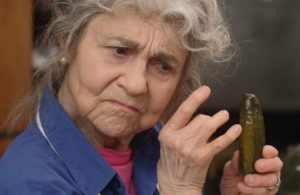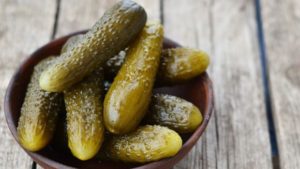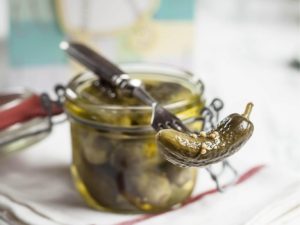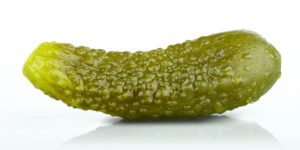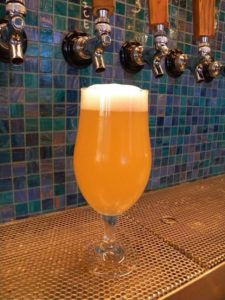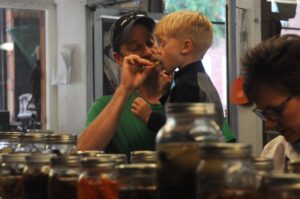GARDEN MAIDEN: Purely promoting pickling
- Holly Hughes, newsroom@mywebtimes.com, 815-433-2000
- The Times
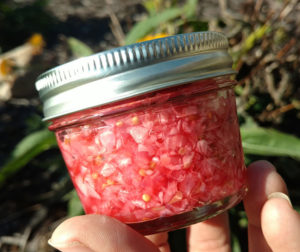
Holly Hughes
If you are a fan of kimchee, you will love radish relish, a finely chopped version of pickling radishes that includes adding ginger, cloves, onions, pepper corn, garlic, cumin and coriander for a delicious slaw garnish or eating right out of the jar.
And so here we are.
Late October, nary a stocking cap or bulky winter scarf within reach. Long underwear still stuffed deep in the fall clothes trunk, and summer tanks circulating through the fresh laundry daily. Only the month and number tells us fall is here.
Indian Summer truly is upon us, with gorgeous hues of golden amber, bright golden yellows and vivid shades of reds and maroons escorting the deciduous trees into their winter stance of bare twigs bracing for the first snow.
You might notice it in your own body. A healthy glow, a yearning to shine a bit brighter and get a few more evening walks in without a jacket or dice up a few more fresh veggies for light garden salads as dinner to accompany wine on the porch as you watch the sunset.
Our bodies know it is time to shift season. The mind reluctantly welcomes cool weather while the heart consoles facing the cold by wandering aimlessly to thoughts of cold winter nights in front of a warm fireplace nestled tightly in warm blankets coddling hot toddies and the like.
Along with the romantic wish list, I am busy creating a practical list of preventative health to escort the aches and pains and discomfort of the seasonal shift into accepting the inevitable grasp of Old Man Winter.
And while my body doesn’t crave it as much in the warm, comforting months of summer, eating pickled foods high in alkalinity ranks high on my list of preparing my body for winter in Illinois.
In our country, dill pickles are the most recognizable pickled food that is far from a staple in our diet. While living in Asia, I learned daily pickled rinds of just about any vegetable you can grow, shredded into an almost sweet but mostly tart slaw, is a standard side dish — called kimchee — often served in portions double or triple the main dish of meat, to balance digestive health on a daily basis.
In practice, pickling actually is quite simple. It is the quicker, more convenient way of fermenting food. Whenever I read about fermenting foods, I imagine the old days when there was no refrigeration. Pioneers cut up there root crops, packed them tight into the few crocks their families could afford and filled them with water and salt to store food for the winter months.
I certainly would not have wanted to be the one doing the testing to find out how many weeks it took for the spoiled effect of nasty bacteria to turn into the safe, healthy bacteria we now call probiotics. So many thanks to our forefathers, who let us know that it takes three to four weeks on the countertop at room temperature in a sealed container and a bit of monitoring the release of noxious gases to make your own fermented pickles on the countertop. Yes, I will try this in the coming weeks. No, I am not excited about trying them.
Instead, I resort to vinegar and sugar — a brine that works just as well and much more rapidly in regards to an end result.
However, anyone can do cucumber pickles. In our kitchen, we are pickling radishes, pears and some decadent garlic cloves as thick as your thumb.
Why pickle your veggies? Pickling food shifts make up a bit and is one way to preserve the highest nutritional profile while adding an alkaline base that literally balances the pH in your body. Some say cancer cannot grow in an alkaline environment, so I make a point of eating anything with a vinegar base at least once a week and drinking lemon in my water daily — another simple way to create an alkaline environment in your body.
Beyond practical health, pickled anything in interesting shapes and sizes adds vivid colors and zesty flavors to your holiday appetizer trays. And if you’re like my son, snacking on an entire jar of bread and butter pickles is not unheard of.
As for me, I am imagining quite the versatile array of garnishes on a Bloody Mary bar to celebrate the art of all things pickled. Bright orange peppers, halved cherry tomatoes, strands of long stringbeans, asparagus spears, daikon hearts and now, pickled radishes and garlic cloves.
Whatever you choose to pickle, there is a certain rhythm that works and it is well worth exploring trusted recipe resources to get the lowdown on the what and why. What we’ve discovered in our research kitchen is that it does not pay to seal jars in long cooking baths if we know they will be devoured within a few weeks.
If you have a favorite recipe that the family loves, do not bother with the last step of the pickling process, which basically seals the jar for long-term preservation on a canning room shelf. Instead, you can go for quick methods of adding a hot brine over your packed veggies into a hot jar and simply sealing them up for a refrigerator version that will last a few weeks.
Since I know I’ll be swamped with harvest and fall field preparation for the next month, this recipe is for long-term storage and I’ll give you details for the garlic, since I’ve had several requests since my last article to share the exact recipe. I could do it in a sentence but for the sake of formality, I will break it down.
Here’s a great recipe for pickled garlic.

